Contents
The Mexico flag is the most significant patriotic symbol of the nation, and it has a history that is both intriguing and instructive. Having its roots in the thriving Aztec civilization. Mexico’s flag history started in the 1300s. The nation’s present crest and colors have undergone several alterations throughout time.
Only a few countries, like Mexico, can claim to have an instantly recognizable silhouette. Below, we will learn more about the design, symbolism, and history of the Mexico flag.
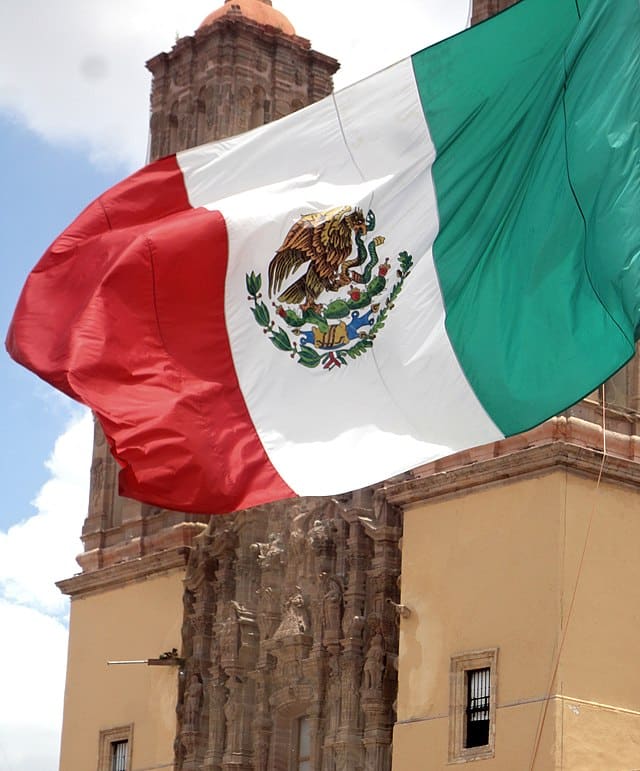
Geography Of Mexico
Similar to most other flags, location and geography played significant roles in the formation of the Mexico flag. Mexico is a country of contrasts, with vast deserts in the north, high mountains and deep gorges in the middle, and extensive rain forests in the south and east.
Mexico has a lot of mountains. Small mountain ranges in the Central Plateau are located between the Sierra Madre Oriental mountain range in the east and the Sierra Madre Occidental mountain range in the west. These areas are abundant in priceless metals like copper and silver.
The peninsula known as the Yucatán Peninsula projects into the Gulf of Mexico southeast of Mexico. It originally served as the center of the Maya civilization, a prehistoric people whose magnificent structures may still be seen today.
The majority of the country’s central and eastern regions, including the capital, follow Central Standard Time (Zona Central). Mountain Standard Time in Mexico is used across the majority of western Mexico, including Baja California Sur, Nayarit, Sinaloa, and Sonora.
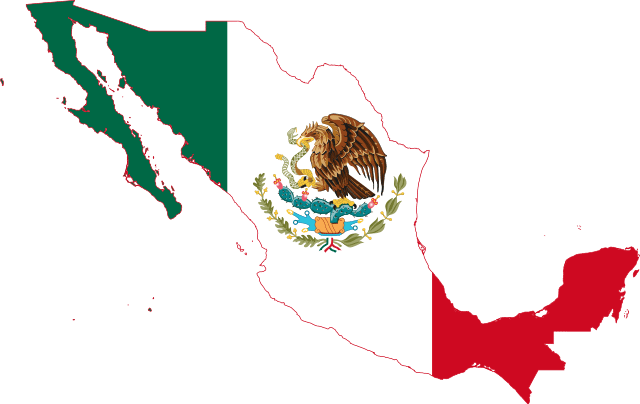
Development of Mexico Flag
During the War of Independence from Spain, a number of flags were used until the first national flag was adopted. Many historians believe that the Standard of the Virgin of Guadalupe, which was carried by Miguel Hidalgo during the Grito de Dolores on September 16, 1810, was the first Mexico flag. However, it was never made into an official flag.
During the Mexican War of Independence, the Standard came to represent the rebel army for the first time. Other additional standards were used throughout the conflict.
José María Morelos used a flag with a picture of the Virgin Mary on it, along with the initials V.V.M. and a blue and white emblem with a crowned eagle perched on a cactus above a three-arched bridge. The Revolutionary Army also flew a flag with vertical stripes in the colors white, blue, and red. After gaining independence from Spain, the flag of the united Army of the Three Guarantees was the first to use the present colors of green, white, and red.
Agustin de Iturbide issued a formal proclamation establishing the national flag in November 1821, and it was used for the first time in July 1822. As soon as the empire was overthrown, this flag was no longer in use.
Second Mexico Flag
After the first federal republic’s creation in 1823, the second national flag was established. The republic picked a new flag in April of that year, with the appearance of the main symbol changing just slightly.
The eagle’s head was stripped of its crown, and a serpent was inserted into its right talon. The tradition of including an oak and laurel branch on the flag has been carried over to the current version. With the first federal republic’s disintegration in 1864, this flag was abandoned.
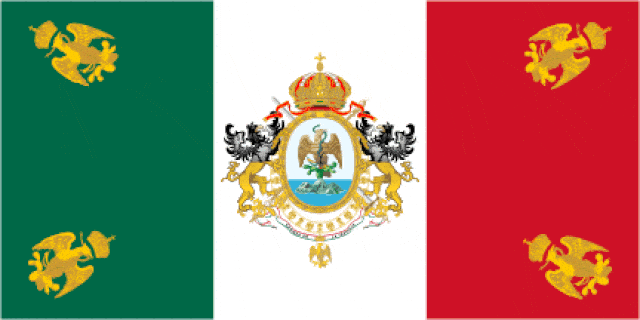
Third Mexico Flag
The Second Mexican Empire’s flag was the third country’s flag. The green, white, and red tricolor pattern was once again utilized for the national flag, with the national arms charged on the white stripe. The flag’s ratio was adjusted from 4:7 to 1:2, and four eagles with crowns perched atop their heads were positioned in each corner.
Emperor Maximilian ordered the design, which gave the arms a style resembling the French Imperial arms, but he also opted to give the flag some “Mexican character.”
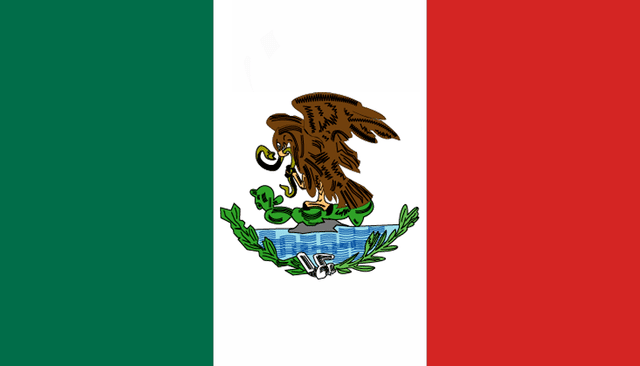
Recent Mexico Flag
On September 16, 1968, the present Mexico flag was adopted, and on February 24, 1984, it was officially recognized by legislation. The present design is a revision of Venustiano Carranza’s original drawing, which modified the eagle’s orientation from looking forward to sideways via a presidential order in 1916.
Government officials had flown official flags before the establishment of the current national flag. The tricolor design was used on all of these flags. The coat of arms, which remained charged in the middle of the white stripe, was the only thing that varied.
The fact that Mexico City served as the host city for the 1968 Summer Olympics may have contributed to the alteration in the flag and arms in that year.
In 1984, there was a discussion on the design of the coat of arms that would appear on the back of the flag. An amendment to the Law of the National Arms, Flag, and Anthem was suggested by a PAN deputy to address this issue by allowing the eagle to face to the right when the reverse of the flag is flown. The statute was amended in 1995.
Some historians believe that the symbol, which depicts an eagle battling a serpent, is likely an import from the Old World because it can be found in ancient Mediterranean cultures. In the end, the representation with the snake won out and came to serve as the country’s emblem.
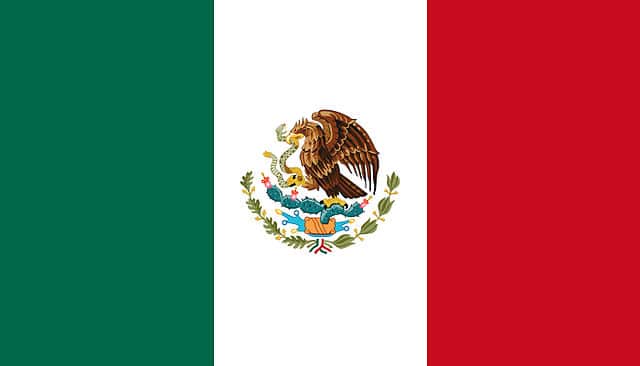
Mexico Flag Details and Symbolism
Serpent
Although, when viewed from a distance, it does not have much in particular compared to other flags, the flag of Mexico is one of the most noticeable aspects of the country. It may sound contradictory, but the only flag with a snake on it is Mexico’s. Since ancient times, the serpent has been a representation of evil, a curse, cunning, betrayal, and foolishness.
Mexico’s coat of arms is also one of a kind on the globe. It depicts a continuing mythical conflict. A golden eagle and a snake are engaged in a life-or-death battle to the right of the serpent. Although the bird is portrayed as being somewhat higher than the snake, the conflict is still ongoing and has not yet been fully resolved. The snake is still alive.
With the potential exception of Malta, which contains a miniature of St. George and the Dragon, this war between the mightiest reptiles and the mightiest birds is the only continuing conflict shown on any flag in existence.
The coat of arms faithfully depicts Mexico’s tragic history, which has been marked by violent revolutions and few periods of peace. Initially, it was the Republicans fighting the Centralists, then it was the Liberals fighting the Conservatives.
Battle
The conflict over the flag symbolizes a more important struggle: Mexico’s adherence to its identity and history, as well as its struggle against the violent and internal forces that pose a danger to the country. Every time a Mexican looks at their flag, they might think about it.
The person who pays close attention will notice that the flag has an entire ecosystem: in addition to an air animal and an animal from the earth, two creatures from completely different worlds engaged in a battle to the death, there is also a cactus and its fruits, water, snails, precious stones, a laurel branch, an oak branch, and an islet.
The golden eagle, who belongs in the heavens, has come to visit. The serpent, incidentally, is in its territory.
Tricolor
There is no debate about the fact that the Mexico flag is acknowledged worldwide. All Mexicans, both those who were born in Mexico and those who were born outside of the country, honor and celebrate it. The people made green (and the eagle’s feathers) their official color, especially at athletic events.
Contrary to its stunning coat of arms, the Mexico flag is not very distinctive in terms of colors. In reality, the colors green, white, and red are among the most common on the globe. Countries like Bulgaria, Hungary, Iran, Madagascar, Tajikistan, and others use this combination on their flags, but Italy and Mexico are striving to be crowned the winners. Since the two flags appear so similar from a distance, Mexican ships frequently got into difficulty during World War II because they were mistaken for Italian ships.
But which one had the fabled tricolor first, Mexico or Italy? About four decades after Mexico, the monarchy of Italy adopted its first green-white-red flag in 1861. The Cisalpine Republic, one of the autonomous nations that made up Italy, had proudly flown the Mediterranean tricolor since 1797, but it had a history.
Regarding the colors green, white, and red, their connotations have evolved with the times. Initially, they stood for togetherness, faith, and independence. Later, they were associated with natural elements like resources, volcanic snow, and human blood.
It was declared by presidential order in 1968, during the nationwide social turmoil, that the colors stood for optimism, solidarity, and the blood of heroes. It is unclear how the administration of President Gustavo Dáz Ordaz decided that white stands for unity.
Bottom Line
To sum up, the Mexico flag has a colorful and varied history. The Aztec standard during the pre-Spanish period had pictures of eagles and panthers. Every morning at Mexico City’s iconic Zócalo square, soldiers from the Mexican army ceremonially hoist a huge flag. The flag is so large that carrying it to the flagpole every day requires more than a dozen individuals. The Mexico flag is a source of immense pride for the country.